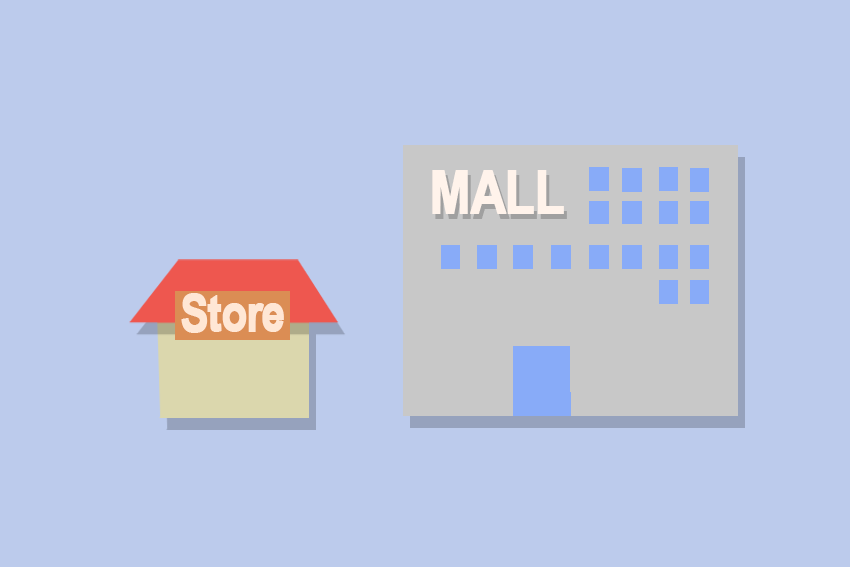
Most modern businesses need an online presence of some sort, and in the majority of cases this will take the form of a website. Unfortunately, simply having a website isn’t enough to transform your organization from a promising startup to a globe-spanning titan. In fact, many businesses have created a website only to end up disappointed that it isn’t generating the return on investment (ROI) that they expected.
This is because that although setting up a website is a relatively straightforward process, creating a good one is not. It takes a lot of careful planning and design skills in order to produce the kind of online presence that makes a genuine difference to your business.
Here are 10 reasons why:
1. It’s an afterthought
If you think that once you’ve got a domain name your work is complete, then you are gravely mistaken. Any website that is worth having requires significant and ongoing work on the part of your business. In particular, it needs to be constantly refreshed and updated in order to attract visitors on a regular basis.
Do you have a website content plan that sets out how often you are going to update it and in what way? This could be in the form of a series of blog posts, product offers or any other interesting content that is relevant to your brand and customers. If your website isn’t consistently updated, it’s unlikely to bring in consistent business.
2. The rest of your online presence is non-existent
Although a functioning website may still be top of the list when it comes to having an online presence, it isn’t the only aspect for your company to consider. There are other ways of getting your brand exposure across digital media, which can be used to successfully augment your website.
Social networks, in particular, give you access to a huge audience that is already broken down into demographics and patterns of behaviour – ripe for your business to target. If you create business accounts across the relevant social media channels, you can direct traffic back to your website. The same is also true of a mobile app, which can be used as a separate, but related, offshoot of your webpage.

3. It’s poorly designed
Even if your website is full of interesting content, or is offering amazing products and services, it could still be let down by poor design. Web design is a much sought after skill in the modern business world, with some companies hiring talented individuals to work full-time in-house and others opting to outsource this process to a third-party agency.
Whichever approach you settle on, it is important to remember that design is hugely important to the visual appeal of your business. You may have only a few seconds to grab the attention of an online visitor and if you fail it is likely that they’ll quickly head to a competitor site. Try to make your design aesthetically appealing, but also clear and concise. And try to make your website’s design match your brand.
The design of your web page has practical implications too. It will have a major impact on how user-friendly it is and whether potential customers are able to use it. When you’re coming up with design considerations, remember to look beyond just the visual.
4. You have a terrible search ranking
You may have the most stunning website in the world, full of engaging content that would make your customers desperate to hand over their money, but if they can’t find it there’s really no point in it being there.
Search engine optimization, or SEO, is a relatively recent strand of marketing that ensures your website ranks highly against relevant search terms. This is achieved by a variety of methods, including landing pages, data analytics and keyword usage. Businesses will, once again, have to determine whether they have the SEO skills they need within their organization, or if they would be better served by outsourcing to a third-party.
If you do choose to partner with an external SEO company, make sure you select one that is fully in-tune with the latest SEO methods. Recent developments to the industry, combined with changes to Google’s search algorithm, mean that this is a constantly evolving practice.
5. You aren’t telling your potential customers to go there
Although SEO practices and other more subtle methods are certainly useful when it comes to boosting website traffic, there’s still a place for direct marketing. Use mailing lists to tell past and potential customers to visit your website, particularly when you have promotions or deals to offer them.
Similarly, make sure you include a link to your site on all of your other marketing materials. This includes both digital and more traditional offerings. Online sales are making up an increasingly large proportion of all sales, so even if you have a physical store, make sure you direct your customers to your webpage for follow-up purchases. If you want customers to visit your site, the least you can do is ask them.

6. Nobody has a clue what your website is about
If the predominant reaction to seeing your website for the first time is one of confusion, then your business has a significant problem. Firstly, take a look at your domain name. Hopefully you will have been able to secure one that matches your business name but if not, at least make sure that it relates to what you do in some way.
Secondly, use the home page to set out exactly what it is that your company does. This doesn’t mean including a 5,000-word essay on your organization’s raison d’être, but rather conveying the core message of your company in as few words as possible.
The main problem that you are likely to have is that you are simply too familiar with your business to see it in the same way that a first-time visitor would. This means that it’s quite likely that you’ll over-explain some things and under-explain others. Try to get someone you know that has no involvement with your business to look over your site before it launches. If they’re not sure what it’s all about, then it may be time to go back to the drawing board.
7.You’re not bragging about your good work
Another reason why your website may not be bringing in the extra business that you envisioned is that you are not making the most of your previous sales. If you’ve done a good job in the past, make sure that potential customers know about it.

Include reviews on your site and make it as easy as possible for past customers to share their feedback. Send them follow-up emails after they’ve made a purchase asking them politely to leave a review – don’t spam them, just give them a gentle nudge. If you’ve only recently gained an online presence, then new visitors might be wary about making a purchase. You may claim that your business is completely trustworthy, but consumers are more likely to believe their fellow customers, so make sure you share their positive views.
The majority of digital growth is now coming from mobile devices and it is vital that your online presence reflects that. Although your desktop site may be functioning well, you must also ensure that it works effectively on smartphones.
In order to have an effective mobile presence, there are a few options that your business can take. The first it to create a bespoke mobile site, separate from your desktop one. This will ensure that your web page works on the smaller screen, but could have an adverse effect on your search ranking, with Google prioritizing sites that take the single URL approach.

The other option would be to create a site that uses a responsive design, that is, one that automatically adjusts to the screen that it is being viewed on. In addition, a mobile app would also be an effective way of capturing the smartphone market. Whichever method you choose, mobile can’t be ignored when designing your company’s online platform.
9. You’re not getting to the point
Your website is your organization’s opportunity to show off, so it’s understandable if you’ve got loads of ideas of what to include. Perhaps you want to tell customers the interesting story of how your business was founded, or what charity programmes your employees are involved with? This is all well and good, but make sure that these aspects of your business are not front-and-centre of your website.

You need to hook your customers straight away, so your homepage needs to be immediate. Tell customers what you can do for them and quickly lead them to the relevant page where you can convert interest into sales.
10. The purchasing process is a chore
If you’ve got a potential customer all the way to your online checkout, make sure you implement a simple and secure purchasing process. Cater for a multitude of payment options and invest in the most robust security that you can. When it comes to making your online presence count, make sure your website doesn’t fall at the final hurdle.










